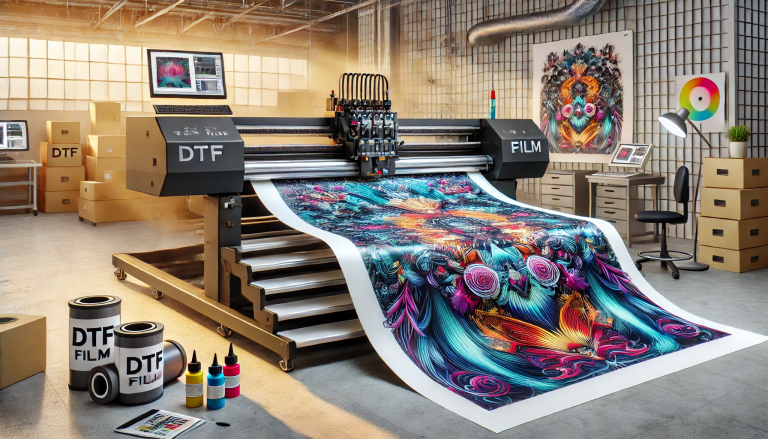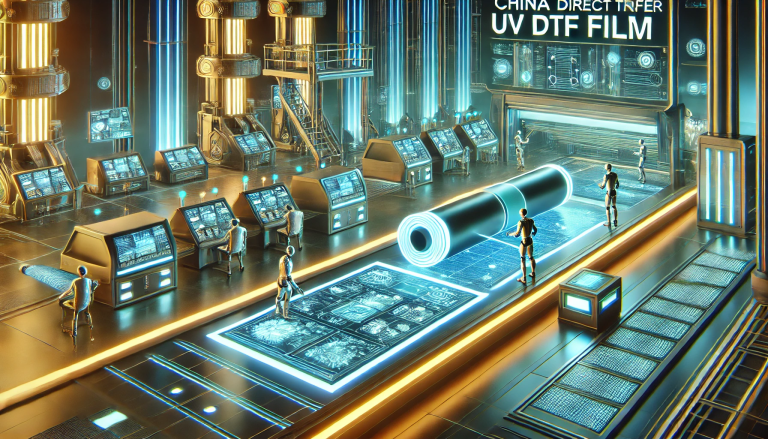“Exploring the World of Direct-to-Film Printers: Bridging Digital and Analog” -MAXDTF- UV DTF Adhesive Transfer Film Wholesale, China UV Magic Paper, Made in China
In today’s rapidly evolving technological landscape, the interplay between the digital and analog realms continues to yield groundbreaking innovations. One such innovation that’s gaining prominence in the realm of printing is the “Direct-to-Film” printer. This remarkable technology is bridging the gap between digital design and traditional film printing methods, creating a synergy that brings together the best of both worlds. In this blog post, we’ll dive into the fascinating world of direct-to-film printers, exploring what they are, how they work, and their impact on various industries.
Understanding Direct-to-Film Printing
Direct-to-film printing is a cutting-edge technique that merges the precision of digital design with the timeless charm of analog film printing. It involves the direct transfer of a digital image onto a physical film substrate, eliminating the need for traditional intermediary steps like producing film positives or negatives. This streamlined approach not only saves time but also allows for more accurate color reproduction and finer details.
How Direct-to-Film Printers Work
Direct-to-film printers function by utilizing specialized inks and advanced printing technology. Here’s a simplified breakdown of the process:
- Digital Design: The journey begins with a digital design created on a computer. This design can be a logo, artwork, text, or any other visual element that needs to be printed onto film.
- Printer Setup: The design is then loaded into the direct-to-film printer’s software. The printer is calibrated to ensure precise color matching and alignment.
- Printing: The printer uses specially formulated UV inks to replicate the digital design onto a transparent film substrate. These inks are cured instantly using UV light, resulting in a vibrant and durable image.
- Film Output: Once the printing process is complete, the film is ready for use. It can be used for various applications such as screen printing, offset lithography, flexography, and more.
Advantages of Direct-to-Film Printing
- Time Efficiency: Traditional methods often involve multiple steps, including producing film positives or negatives. Direct-to-film printing streamlines the process by directly creating the film, saving valuable time.
- Accuracy: The digital nature of the process ensures accurate color reproduction and fine details, leading to higher print quality.
- Cost Savings: With fewer intermediary steps and materials required, there’s a potential for cost savings in terms of labor and resources.
- Versatility: Direct-to-film printing can be used across various industries, from textiles and packaging to graphic design and art reproduction.
- Environmentally Friendly: Since the process skips the need for chemical processes often associated with traditional film printing, it can be considered more environmentally friendly.
Applications in Various Industries
Direct-to-film printers have found applications in a wide range of industries:
- Textile Printing: The fashion and textile industry benefits from the accuracy and speed of direct-to-film printers for creating intricate designs on fabrics.
- Packaging: In packaging design, direct-to-film printing facilitates the creation of detailed mock-ups and prototypes.
- Graphic Design: Graphic designers use direct-to-film printers to produce accurate proofs and separations for commercial printing.
- Fine Arts: Artists can reproduce their artwork with exceptional precision, making it an attractive option for limited edition prints.
- Circuit Board Production: The electronics industry uses this technology for creating prototypes and intricate designs for circuit boards.
In Conclusion
The direct-to-film printing technology stands as a testament to the ever-evolving capabilities of digital innovation. By seamlessly combining the digital and analog worlds, it offers a more efficient, accurate, and versatile method for transferring digital designs onto physical film substrates. As this technology continues to advance, it’s likely to reshape how industries approach design, printing, and manufacturing, fostering a new era of creativity and efficiency.




